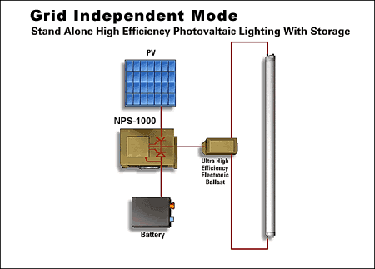

- CONNECTING INDEPENDENT SOLAR GRIDS TO GRID INSTALL
- CONNECTING INDEPENDENT SOLAR GRIDS TO GRID GENERATOR
A power meter measures the electricity going from your system into the grid, and from the grid into your system. Microinverters can also be used in a grid-tied system, and can make your solar setup more efficient when compared with standard grid-tied inverters.Īnother key piece of equipment is a two-way power meter.

These inverters convert the direct current (DC) from your solar panels to alternating current (AC) to feed into the grid and to power appliances. For example, grid-tied systems need a grid-tied inverter (GTI) (such as a suitable central inverter, string inverter or microinverter). Equipment required for a grid-tied systemĪs grid-tied systems are connected to both a solar panel array and the main grid, they require some specialized equipment. This process earns you credit from your energy provider, which can reduce the cost of your energy bill significantly. Having your energy supply linked to both solar panels and the main grid offers all the major benefits of solar (such as cheaper power and a lower carbon footprint), but still gives you the reliability of the grid.Īrguably the greatest benefit of a grid-tied system over an off-grid system is the ability to feed excess electricity into the grid. This simplicity generally translates to savings for the customer, making grid-tied solar the most accessible form of solar power for most people.
CONNECTING INDEPENDENT SOLAR GRIDS TO GRID INSTALL
This makes them more straightforward to install than other options, such as off-grid or hybrid systems. These advantages include:Īs the simplest type of solar setup, grid-tied solar systems require less equipment, mainly due to the fact that they are the only type of solar system that doesn’t require a battery. Grid-tied solar systems have several key advantages that contribute to them being the most popular type of solar setup.
CONNECTING INDEPENDENT SOLAR GRIDS TO GRID GENERATOR
A hybrid system is mainly composed of a grid connection, solar panels, a hybrid inverter, batteries, and a generator in some cases Advantages of a grid-tied solar system This means users can dynamically switch between energy sources depending on price, energy production, and energy usage. Hybrid systems include solar panels, batteries, and a grid connection, as well as a generator in some cases. Hybrid solar systems combine some of the elements of the other two systems, making them an attractive option for those looking for flexibility. To ensure reliable access to power, off-grid systems will generally also include a battery system and a backup generator. Instead, they operate as a closed system, making them ideal for areas that do not have grid access. Off-grid systems differ in that they are not linked to the main electricity grid. As such, different equipment is used to that used in off-grid systems. This means that you can draw power from either the panels or the grid, and also automatically feed excess solar power into the grid. A grid-tied system is, as we’ve covered above, linked to both the solar panels and the main grid. The main types of solar systems to choose from are grid-tied, off-grid, and hybrid. What makes them different to other solar systems? When energy generation from the panels is insufficient to match energy usage, the system automatically draws power from the main grid to make up the shortfall. The basic premise of a grid-tied system is to connect a building to both the main electricity grid and a solar array, so power from either or both can be used.Īs there is no energy storage equipment in a grid-tied system, any power generated by the solar panels that is not used immediately is automatically fed into the main grid. Grid-tied solar systems are the simplest type of solar system, with different equipment and layout required compared with off-grid and hybrid solar systems. They can operate without being connected to a solar battery, making them the most simple, cost-effective, and popular type of solar system.


 0 kommentar(er)
0 kommentar(er)
